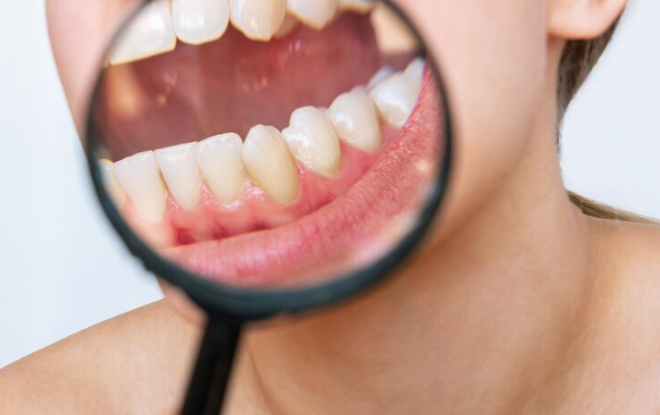
You might not realize it, but gum line fillings can do more than just fill a gap—they can affect the way your bite feels and even your jaw alignment. While they’re great for restoring your smile, these fillings can sometimes cause subtle changes to how your teeth meet.
If they aren’t properly fitted or placed, the impact can extend beyond the gum line, leading to discomfort or even long-term jaw problems. A tiny adjustment to your teeth’s alignment can throw off the balance of your bite, causing pain or difficulty in chewing. So, it’s worth paying attention to how gum line fillings can play a bigger role in your overall dental health.
How do gum line fillings affect the alignment of your bite over time?
Gum line fillings can impact the alignment of your bite over time, especially if they are not properly placed or if the material used alters the tooth’s natural shape. Here’s how gum line fillings can affect bite alignment:
- Altered Tooth Height: If the filling is too high or uneven, it can cause the tooth to sit slightly out of alignment with the surrounding teeth. This can disrupt how your teeth come together when you bite, leading to an uneven bite. Over time, this misalignment can cause discomfort as the pressure on the jaw and muscles becomes uneven.
- Shifting Teeth: A gum line filling can change how your teeth fit together, potentially leading to shifts in the position of adjacent teeth. As teeth move to compensate for the change in alignment, the overall bite may become less balanced, leading to problems such as crowding or gaps.
- Jaw and Muscle Strain: When the bite is misaligned, the jaw and surrounding muscles may have to adjust to the uneven pressure. If the misalignment persists, this can result in jaw pain, muscle tension, headaches, or even temporomandibular joint (TMJ) dysfunction.
- Wear on Opposing Teeth: An improperly placed filling may cause uneven contact between the upper and lower teeth, leading to excessive wear on specific teeth. Over time, this can further disrupt the natural alignment of your bite.
To prevent these issues, it’s essential to ensure that gum line fillings are placed accurately and carefully, with attention to the overall alignment of your teeth and bite. Regular check-ups with your dentist can help address any potential alignment problems early.
Can gum line fillings lead to changes in jaw positioning?
Yes, gum line fillings can change jaw positioning over time, especially if the fillings are not properly placed or cause an imbalance in the bite. Here’s how gum line fillings can influence jaw alignment:
- Altered Bite: If a gum line filling is placed too high, too low, or unevenly, it can cause an imbalance in how the upper and lower teeth come together when you bite. This can disrupt the natural alignment of the bite, leading to uneven pressure on the jaw and muscles. Over time, this misalignment may cause the jaw to adjust, potentially shifting its position to compensate for the change.
- Jaw Strain and Discomfort: A misaligned bite can strain the jaw muscles, leading to discomfort, pain, or even temporomandibular joint (TMJ) disorders. As the jaw compensates for the misalignment, it may move unnaturally, causing tension and discomfort in the jaw and surrounding muscles.
- Teeth Shifting: Placing a gum line filling can also influence how nearby teeth interact, potentially causing them to shift. This can lead to changes in your bite and jaw positioning, particularly if the teeth are no longer making proper contact.
To minimize the risk of these changes, it’s important to work with a skilled dentist who ensures that gum line fillings are placed correctly, with proper consideration for the overall alignment of your teeth and jaw. Regular check-ups can help detect any bite issues early, preventing further complications.
What are the long-term effects of gum line fillings on dental structure?
Gum line fillings, while essential for restoring cavities near the gum line, can have long-term effects on the dental structure if not properly placed or maintained. Here are some potential long-term impacts:
- Tooth Structure Changes: Over time, a gum line filling can cause changes in the tooth’s structure, especially if a large portion of the tooth is filled. The material may not bond as securely as the natural tooth enamel, leading to wear and tear around the filling. This can compromise the overall integrity of the tooth, increasing the risk of cracking or breaking, especially if the tooth is under constant stress from biting or chewing.
- Shifting of Teeth: If a gum line filling is improperly placed or uneven, it can alter the alignment of the tooth and affect how the teeth come together when you bite. This misalignment may lead to shifts in adjacent teeth over time, causing gaps or overcrowding, which can affect your bite and overall dental health.
- Gum Recession: While fillings are designed to restore teeth near the gum line, improper placement or excessive filling material can contribute to gum recession. As the gums recede, it can expose the edges of the filling, potentially leading to sensitivity or decay in the surrounding areas.
- Increased Wear on Adjacent Teeth: A poorly placed filling can create uneven surfaces that may cause excessive wear on neighboring teeth. This can affect your bite, leading to additional dental issues like cracks, cavities, or tooth erosion.
- Potential for Future Decay: While fillings are designed to prevent decay, they can trap bacteria and food particles along the edges, especially if they’re not perfectly sealed. Over time, this could lead to new cavities or decay forming around the filling or surrounding areas.
To minimize these long-term effects, it’s important to have gum line fillings placed by a skilled dentist who ensures proper fit and longevity. Regular check-ups can help catch any issues early and maintain the overall health of your teeth.
How do dentists ensure gum line fillings do not alter bite function?
Dentists take several steps to ensure that gum line fillings do not alter bite function. These precautions help maintain proper alignment and prevent discomfort:
- Precise Shaping: Dentists carefully shape the filling to match the natural contours of the tooth. This ensures that the filling is level with the surrounding teeth, preventing any unevenness in the bite.
- Bite Evaluation: After placing the filling, dentists conduct a thorough bite test to ensure the teeth come together evenly. The filling is adjusted to restore proper bite function if any areas feel high or misaligned.
- Material Selection: Dentists choose materials for gum line fillings that blend well with the tooth’s natural structure, providing both strength and flexibility. Proper material selection helps maintain tooth function without altering the bite.
- Follow-Up Care: Dentists schedule follow-up appointments to monitor the filling and address concerns. If bite problems arise after the procedure, they can make further adjustments to ensure comfort and function.
Dentists can minimize the risk of disrupting bite function after gum line fillings by taking these steps.
Protect Your Bite: Learn About Gum Line Fillings!
At Gentle Touch Family Dentistry, we understand the hidden impact that gum line fillings can have on your bite and jaw alignment. While these fillings are essential for restoring your teeth, improper placement or material can lead to misalignment, discomfort, and long-term dental issues.
Our experienced team ensures that your gum line fillings are placed with precision to maintain the natural alignment of your teeth and jaw. Contact us today to schedule an appointment and learn how we can help protect your bite and improve your overall dental health with expert care and personalized solutions.



